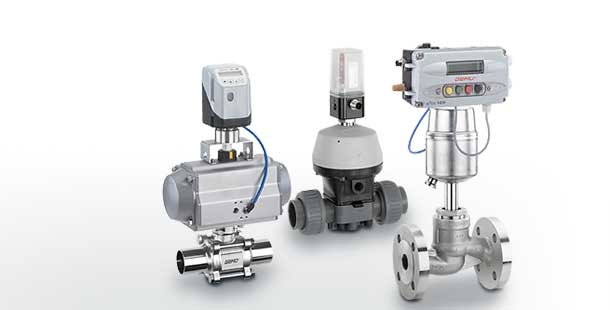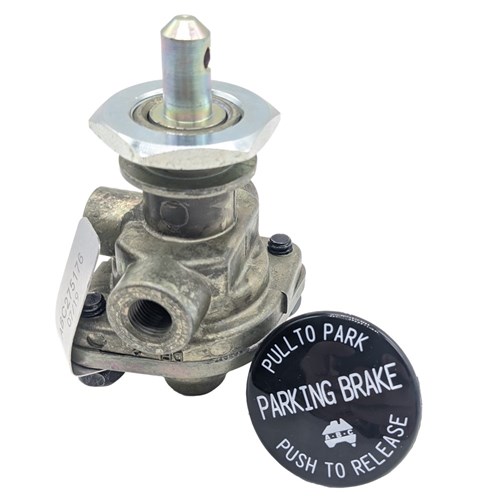Optimizing System Control with High-Performance Control Valves
Optimizing System Control with High-Performance Control Valves
Blog Article

Maximize Energy Savings and Comfort With Advanced Structure Automation Controls
In the world of contemporary style and center monitoring, the integration of sophisticated structure automation manages stands as a pivotal improvement. The convergence of modern technology and sustainability has actually birthed a brand-new age where power effectiveness, comfort optimization, and operational streamlining are no more obtainable truths but distant aspirations. By taking advantage of the power of automation, buildings can adjust, react, and evolve in means that were as soon as unbelievable. The possibility for considerable energy financial savings and enhanced comfort is not simply a possibility however a promise waiting to be fulfilled. This paradigm change in building administration holds the vital to unlocking a globe where ecological conscientiousness and owner wellness sympathetically coexist within the walls of our structures.
Power Efficiency Benefits
Energy effectiveness advantages can significantly minimize power usage and functional expenses in buildings. By implementing energy-efficient methods and innovations, structure proprietors and operators can accomplish significant financial savings while additionally adding to ecological sustainability. One of the main benefits of improving energy effectiveness in structures is the reduction of energy expenses. Energy-efficient systems, such as innovative structure automation controls, can maximize the usage of sources like illumination, heating, and cooling, resulting in reduced energy costs over time.
Moreover, improved energy performance can lengthen the lifespan of building tools and systems. By operating a lot more successfully, heating and cooling systems, lighting fixture, and other building parts experience less deterioration, causing minimized upkeep and replacement prices. Furthermore, energy-efficient structures frequently regulate higher residential or commercial property worths and rental prices, supplying lasting monetary advantages to owners.
Additionally, power efficiency can improve resident comfort and performance. Appropriately regulated indoor atmospheres with optimum lights and thermal problems create an even more helpful and enjoyable work area, bring about improved worker satisfaction and efficiency. Overall, the power effectiveness benefits connected with sophisticated structure automation controls are diverse, encompassing cost financial savings, ecological stewardship, and resident wellness.
Improved Convenience Control
Enhancing comfort control in building settings needs an advanced assimilation of innovative automation systems for ideal owner health. By making use of advanced building automation controls, facilities can customize the interior atmosphere to satisfy the particular requirements and preferences of owners. These systems make it possible for exact guideline of temperature level, illumination, and air flow, creating a comfortable and productive environment. Passenger contentment and productivity are closely linked to thermal comfort, making it vital to have systems in position that can adapt to transforming conditions in real-time.
By incorporating these sophisticated controls, structures can not only boost convenience however also enhance energy effectiveness by optimizing system procedures based on real tenancy and use patterns. Eventually, prioritizing resident comfort via innovative automation systems leads to an extra satisfying and healthier indoor atmosphere.
Functional Performance Improvements

In addition, the execution of real-time tracking and analytics devices makes it possible for building operators to determine power ineffectiveness and operational abnormalities without delay. By continuously monitoring power use patterns and system efficiency metrics, modifications can be made in real-time to maximize power intake and make sure peak operational effectiveness. control valves. In addition, including demand reaction methods into building automation controls can further boost functional effectiveness by dynamically readjusting power usage based on grid conditions and rates signals
Indoor Environment Optimization
Reliable interior climate optimization is a fundamental aspect of structure automation controls, guaranteeing passengers' convenience and health while making the most of energy cost savings. By utilizing sophisticated sensing units and controls, building automation systems can constantly check and readjust temperature level, moisture levels, air high quality, and air flow to produce an optimal indoor atmosphere. Keeping consistent and comfortable conditions not just boosts resident contentment but additionally enhances efficiency and general well-being.
Interior environment optimization likewise plays an important duty in power effectiveness. By fine-tuning heating, air flow, and air conditioning systems based upon real-time information and occupancy patterns, get redirected here building automation controls can dramatically decrease energy intake - control valves. Applying methods such as demand-controlled air flow and thermal zoning can assist lessen energy waste while making sure that each area of the building gets the required conditioning.

Lasting Setting Creation
Structure automation controls not only enhance interior climate problems for power effectiveness and occupant comfort yet additionally lay the structure for producing a lasting environment through calculated management of sources and systems. By integrating sophisticated structure automation innovations, such as sensing units, actuators, and intelligent software application, centers can readjust and keep track of energy usage in real-time to lessen waste and decrease their carbon impact. These systems make it possible for anticipating maintenance, recognizing potential issues prior to they intensify and maximizing devices performance to boost long life and efficiency.
Additionally, lasting environment development prolongs beyond energy monitoring to encompass water preservation, waste reduction, and interior air quality renovation. Building automation controls can regulate water usage, detect leakages, and guarantee proper waste disposal methods, adding to overall sustainability initiatives. In addition, by regulating and checking air flow and purification systems, these technologies boost resident wellness and productivity while decreasing power usage related to HVAC operations.
Conclusion
Finally, progressed building automation manages deal considerable advantages in terms of power cost savings, comfort control, operational performance, interior environment optimization, and producing a sustainable environment. By applying these controls, buildings can attain optimum efficiency while lowering energy usage and improving occupant comfort. It appears that making use of view website advanced automation technology is essential in link enhancing building efficiency and producing an extra lasting future.
Energy effectiveness advantages can significantly reduce power consumption and functional expenses in structures. In general, the power performance advantages linked with innovative building automation controls are diverse, incorporating expense financial savings, environmental stewardship, and owner wellness.
In addition, integrating need feedback methods right into building automation controls can even more boost operational performance by dynamically changing power use based on grid conditions and pricing signals.
Building automation manages not only maximize indoor climate problems for energy performance and passenger comfort however additionally lay the foundation for developing a lasting environment through calculated management of sources and systems.In conclusion, progressed building automation regulates offer considerable benefits in terms of energy financial savings, comfort control, operational efficiency, indoor climate optimization, and creating a lasting environment.
Report this page